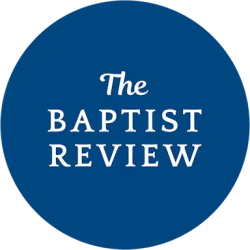Two years ago the credentials committee brought the issue of Saddleback Church to the Convention with the recommendation to form a task force to study the meaning of “pastor” in the BFM2000. The credentials committee was onto something. There isn’t a uniform application of the title “pastor” across our churches. Dr. Mohler responded rightly by pointing out they were barking up the wrong tree because the problem was not our confession. The BFM 2000 is clear when it states, “While both men and women are gifted for service in the church, the office of pastor/elder/overseer is limited to men as qualified by Scripture.” In short, the committee identified the problem but proposed the wrong solution.
Southern Baptists have stated our complementarian convictions explicitly, particularly on the issue of women in the pastorate, for just shy of a quarter century. While our confession roots the use of the term in the scriptural office, our usage and our practice are inconsistent. To put it another way, while Southern Baptists may believe the term pastor is synonymous with elder/overseer and that there is one office, not three, not every church applies this in the same way.
Some churches in the SBC are comfortable with affixing adjectives to “pastor” (e.g., youth pastor, children’s pastor, associate pastor, etc.). Others use different nomenclature, such as minister or director. We also have churches that use the title minister but do so with no functional difference from those who use the word pastor. The job description and duties are the same, but the names are different.
All this points to the bigger issue of semantic and functional inconsistency within the SBC. What the credentials committee was reticent to do was set a precedent that could have unintended consequences. They realized that without clarity on semantic and functional issues, they could knock over the first in a series of dominoes they had not intended.
With 47,000 churches in the convention, we do not need to map how every one of them uses the title or how functions differ from church to church. Instead, a taxonomical approach may inject some clarity and provide a helpful rubric for this discussion.
Breaking Down the Inconsistency
Before defining terms let me make one important caveat: what follows is a survey of the landscape as it is. I am intentionally leaving aside questions of theology to demonstrate the inconsistent nature of the practice and nomenclature in the SBC. Some want to distinguish between office and function, others claim such a distinction is unwarranted. While those and other theological questions are inextricable from the larger conversation, my goal is merely to provide a taxonomy by which we can roughly classify various approaches within the SBC. With that in mind, let us define terms.
The first distinction is one of semantics, i.e., language and its use. Focused title refers to churches that apply pastor to the office of elder/overseer without using the title with the addition of modifying adjective. Conversely, expansive title refers to churches that apply pastor to other positions in the church with adjectival modifiers. Simply stated, does the church use the word pastor with the prefix associate, youth, children, etc., or not?
In addition to semantic differences, churches also display functional differences. Focused function refers to churches where the functions and duties of the pastoral office are restricted to those with a pastoral title. On the other hand, expansive function refers to churches where pastoral functions and duties can be carried out by those whose title does not include pastor. The simple question is whether or not those who perform the pastoral duties in the church carry the title pastor (for the sake of this article, I’m using "pastoral duties" to describe things we would traditionally think of like preaching/teaching, pastoral counseling, and other functions generally associated with the exercise of authority).
This leaves us with four basic types of churches:
Focused Title, Focused Function
This designation applies the title pastor without adjectival modifiers, and its organizational structure limits pastoral functions to the pastoral office. Examples of this type are single-staff churches where volunteers lead ministries but do not fulfill pastoral duties. Similarly, a congregation with a plurality of elders who bear pastoral responsibilities and do not affix adjectives to pastor falls within this category.
Focused Title, Expansive Function
These churches apply the title pastor without adjectival modifiers. However, they may have one or more who effectively function in pastoral roles by fulfilling the duties of a pastor. One example of this type is a church with multiple staff where the title minister or director is given instead of pastor. There are churches that, for various reasons, choose not to use the term pastor in certain job titles but the duties are indistinguishable from others that do.
Expansive Title, Focused Function
These churches use the title pastor with adjectival modifiers, but only those with the pastoral title perform the pastoral functions. This covers churches with multiple people on pastoral staff. The adjectival modifier in these cases typically designates their primary area of ministry. However, these pastors, and only these pastors, share the pastoral responsibilities.
Expansive Title, Expansive Function
The final group encompasses churches that use the pastor with adjectival modifiers, but they also have others who do not carry the pastor title performing pastoral functions. A church could have several people on its pastoral staff but one is given the pastoral title while another one is called a minister even though their job descriptions are effectively the same. The reasons for the distinction could vary widely. The church may choose to apply the term pastor only to someone who has finished seminary or is ordained. Additionally, they may decide to use the term expansively but reserve the pastoral title to men. The factors contributing to this decision can vary from church to church, but the result is the same.
If you are like me, you probably know at least one church that falls into each category. If you looked at the churches in your area you might find one predominant tendency, while another area may have a different prevailing tendency. One might undertake the historical task of tracking the development of these tendencies with the life of the Convention. While our historical records may be able to pinpoint a season when use of the title pastor began to expand, I doubt those records would be detailed enough to provide much insight into the development of expansive function among churches.
Concluding Reflections
Though it would be interesting to classify the churches of the SBC within this framework, time nor sanity permits such a study. Rather, my goal is a larger conversation. In that spirit, I would like to propose three areas where this taxonomy may prove helpful in our current moment.
1. The Law Amendment
Rather than take a side on this question, I would like to propose we think through the intended effect of the Law Amendment on the different groups outlined above. Churches that are focused in both title and function would not be affected, but the question remains how other groups may be. If a church has a woman on staff with a pastoral title, would they need only to change the nomenclature or would they also be required to change the function? For example: would churches with expansive titles be required merely to change their nomenclature when it comes to women, or would they also need to remove those women from the pastoral functions? I suspect there are people on both sides of this question.
Using this taxonomy gives Southern Baptists those who oppose and those who support the amendment a common conceptual framework and vocabulary with which to engage.
2. Confessional Subscription
A recent proposal promoted the idea the SBC should require churches to affirm the BFM2000 to promote unity and doctrinal clarity. I appreciate the desire for unity and clarity. However, if we take the taxonomy presented above intellectual honesty demands we acknowledge there are Southern Baptist churches who have already adopted the BFM2000 as their confession of faith but fall all along this spectrum. From the first time it appeared in 1925, the BFM has always been a confession that states our common beliefs but allows for wide areas of disagreement. Without a much more granular confession that outlines many more aspects of ecclesiology, simply adopting the BFM200 will not bring the desired clarity on this issue.
3. “Closely Identifies”
Article III.1.1 states churches in friendly cooperation must have “a faith and practice which closely identifies with the Convention’s adopted statement of faith.” What that phrase means is perhaps more in the eye of the beholder than in the text itself. When does a church’s semantic use of the term pastor or its functional application place it outside close identification? By using this taxonomy, perhaps we can have a more robust discussion about what “closely identifies” entails.
Here we come full circle. In 2022, Adam Greenway responded to the credentials committee’s recommendation by asking the convention to study what is meant by “closely identifies.” That is a bigger question that should be addressed (and perhaps will be when the cooperation group releases their recommendations on May 1). In the spirit of encouraging healthy conversation on this and other issues, I submit this taxonomy as one stepping stone along the path.
Editor's Note: As a part of its commitment to fostering conversation within the Southern Baptist Convention, the Baptist Review may publish editorials that espouse viewpoints that are not necessarily shared by the TBR team or other contributors. We welcome submissions for responses and rebuttals to any editorials as we seek to host meaningful conversations about the present and future of our convention.


